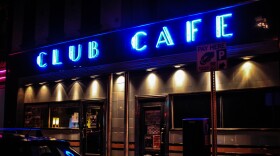The identity of Pittsburgh is synonymous with the steel industry. The city’s largest skyscraper is the U.S. Steel Tower. Its football team is the Steelers, and to the nation, it's the Steel City.
But what about the city’s other industries? Before the rise of steel businesses in the region, western Pennsylvania was the center of glass sales in the United States.
Pittsburgh glass was so well known it was selected to adorn the tables of five U.S. presidents, the windows in the Statue of Liberty’s crown and the tiles lining the inside of the Lincoln and Holland Tunnels in New York.
The Heinz History Center is currently hosting a long-term exhibition that explores the history of glasswork in the area titled "Glass: Shattering Notions." Anne Madarasz, the center's museum division director, said the exhibit is meant to change the way people think about glass.
“Part of that is telling people, especially from this region, the story of western Pennsylvania as the center of production, the center of innovation and the center of the market place for the national glass industry,” she said.
The Pittsburgh glass industry began in 1797 with the opening of two factories. By 1920, 80 percent of the glass made in the country was coming from the Pittsburgh area, with hundreds of factories along the rivers and across the region. Access to the rivers, abundant raw materials and coal supplies for fuel allowed Pittsburgh to find huge success in the market west of the Appalachian Mountains.
Originally making glass was a craft skill that required in-depth knowledge to perform the delicate task. Initially all glass products were formed by blowing molten glass and manipulating it into the desired shape. Innovations such as pressed glass and automated bottle blowers allowed for glass to be available to a wider market for a more affordable price.
Production slowed in the 1900s as glass began to play a smaller role in daily life due to new materials like plastic replacing it.
Though commercial producers like Pittsburgh Plate Glass are still headquartered here, places like the Pittsburgh Glass Center are bringing a more artistic approach to the city’s glass heritage. Heather McElwee, executive director of the center, sees the nonprofit as the headquarters for art glass in Pittsburgh.
“What we really do focus on doing here is teaching classes and workshops," she said. "Everything from glass blowing, flame working, kiln casting, stained glass, painted glass, painting on glass, engraving ... we kind of like to say if it can be done on glass it can be done in this building.”
Even experienced glass artists can take a week-long intensive course with a master artist or work in the studios in an artist residency at the center, which was founded in 2001.
“We like to think that the Pittsburgh Glass Center is maybe Pittsburgh’s future in glass from an art perspective,” McElwee said. “You know, taking that rich history in this city and kind of putting a new spin on it.”






















